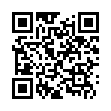部屋
提供:MTG Wiki
| 登場セット |
|---|
| ダスクモーン:戦慄の館 ダスクモーン:戦慄の館統率者デッキ |
部屋/Roomとは、エンチャント・タイプの1つ。
エンチャント — 部屋(Room)
あなたがこのドアを開放したとき、クリーチャー最大1体を対象とする。それをオーナーの手札に戻す。
(どちらの半分でも唱えることができる。そのドアは戦場で開放される。閉鎖されているドアのマナ・コストを支払って、それを開放してもよい。これはソーサリーとして扱う。)
エンチャント — 部屋(Room)
あなたがコントロールしている1体以上のクリーチャーがプレイヤー1人に戦闘ダメージを与えるたび、カード1枚を引く。
(どちらの半分でも唱えることができる。そのドアは戦場で開放される。閉鎖されているドアのマナ・コストを支払って、それを開放してもよい。これはソーサリーとして扱う。)
目次 |
[編集] 概要
次元/Plane全体が1つの館であり、部屋で構成されたダスクモーン/Duskmournを表したエンチャント・タイプ。
パーマネント版分割カードであり、既存の分割カードと異なりタイプ行は共有となっており、イラスト欄は繋がり1つの横長のイラストとなっている。
部屋の各半分は「ドア/Door」と呼ばれる。唱える際はどちらかのドアを選んで唱え、その片方のドアのみが能力を発揮する。唱えなかった方のドアも、ソーサリー・タイミングでそのマナ・コストを支払うことでドアを開放できる。
ダスクモーン:戦慄の館では全色に存在し、青と赤は少し多くリミテッドでの青赤のアーキタイプにもなっている。また、部屋のドアを完全に開放することで誘発する違和感や、部屋のドアを閉鎖したり開放したりすることのできるカードも収録されている。
- 通常分割カードは左側より右側の方がマナ・コストが重いという定型になっているが、部屋ではそうと限らない。Mark Rosewaterはこれについて、通常の分割カードと異なりイラストが一繋がりのため、セット・デザイン・チームがカードを調整しようとした場合に左右を入れ替えるわけにはいかなかったからでは無いかと推察している[1]。
[編集] ルーリング
部屋そのものには特別なルールは無く、共有タイプ行/shared type lineを持つ分割カードとしてルールが制定されている。ダスクモーン:戦慄の館時点では部屋専用のルールであるので、このページで解説する。
戦場とスタック以外での特性や唱える際の選択などは分割カード#ルーリングを参照。
[編集] 定義
共有タイプ行を持つパーマネント・カードである分割カードが存在する。それらのオブジェクトの共有タイプ行は戦場で機能する2つの常在型能力を表す。
- このパーマネントが「左半分が開放された/left half unlocked」状態でないなら、そのオブジェクトはそれの左半分の名前、マナ・コスト、ルールテキストを持たない。
- このパーマネントが「右半分が開放された/right half unlocked」状態でないなら、そのオブジェクトはそれの右半分の名前、マナ・コスト、ルールテキストを持たない。
これらの能力と、そのオブジェクトの特性がどちらの半分に属しているかはコピー可能な値である。
「左半分が開放された」「右半分が開放された」はパーマネントが持ちうる指標である。パーマネントがその半分に対応する適切に開放されたという指定を持つとき、その半分は「開放されている/unlocked」と呼ばれる。そうでなければ、その半分は「閉鎖されている/locked」と呼ばれる。
[編集] ドアを開放する
部屋・呪文が解決した時、その部屋が戦場に出ると同時に、対応するドアが開放される。唱えなかった側のドアは閉鎖されている。閉鎖されているドアの特性(名前やマナ・コスト、ルール・テキスト)は存在しないものとして扱われる。
あなたのターンのメイン・フェイズ中にあなたが優先権を持ち、スタックが空である時はいつでも、閉鎖されたドアのマナ・コスト(「開放コスト/Unlock cost」とも呼ばれる)を支払ってよい。そのドアは開放された状態になる。これは特別な処理である。これはスタックを使わないので、対応することはできない。
部屋がスタック以外の領域から戦場に出るなら、それは両方のドアが閉鎖された状態で戦場に出る。部屋のどちらのドアも開放されていないなら、それは名前も能力も持たない部屋・エンチャントである。
- 「あなたがこのドアを開放したとき」に誘発する能力は、そのドアが開放されたときに誘発する。これは、次の2つの方法のいずれかで起こりうる。
- そのドアが戦場で開放される。
- 対応する半分を唱え、その部屋が戦場に出たときに開放される。
- 2番目のケースでは、ドアが開放されることでその能力が誘発するため、パーマネントが戦場に出たときに誘発する能力を追加で誘発させる効果(たとえば、パンハモニコン/Panharmoniconが持つ効果)は、適用されない。
- 一部の能力には、あなたがコントロールしている部屋のドアを開放できるものもある。そのような能力で、すでに開放されているドアを開放するという選択を行うことはできない。そのような能力が対象を必要とする場合、両方のドアが開放されている部屋を対象とすることはできるが、能力が解決される際に何も起こらない。
- 一部のドアには、そのドアを開放するたびに誘発し、1つ以上の対象を必要とするものがある。その誘発型能力に対して適正な対象が不十分であっても、あなたはそのドアを開放することができる。その誘発された能力はスタックに置かれない。
- 「あなたが部屋1つを完全に開放するたび」に誘発する能力は、その部屋のもう片方のドアがすでに開放されている時にドアが開放されるか、もしくはその部屋の両方のドアが同時に開放された場合に誘発する。
[編集] コピー
戦場の部屋・パーマネントをコピーしたパーマネントが戦場に出る、あるいはコピー・トークンが戦場に出るなら、それはコピー元の部屋の開放状況に関わらず、両方のドアが閉鎖された状態で戦場に出る。既に戦場に存在するパーマネントが部屋・パーマネントをコピーする場合、コピー元の部屋の開放状況に関わらず、コピー先のパーマネントの開放状況で特性が決まる。スタック上でコピーされた部屋呪文は、どちらのドアが唱えられたかの選択を保持し、解決されると、そのコピーがトークンになる際に適切なドアが開放された状態で戦場に出る。
いずれの場合も、閉鎖された部屋の情報もコピーされており、マナ・コストを支払うことで部屋を開放することが出来る。
- 日本公式サイトのメカニズム記事では「部屋をコピーするとコピー元の部屋の開放されている特性をコピーする。」という旨が残っているが、元の英語記事では著者のMatt Tabakが誤りであったとXで説明し、現在は記述は削除されている[2][3][4]。
[編集] 注釈
- ↑ Blogatog(Blogatog 2024年9月21日)
- ↑ 『ダスクモーン:戦慄の館』のメカニズム(マジック日本公式サイト 2024年9月1日)
- ↑ Matt Tabak(Matt TabakのX 2024年9月4日)
- ↑ 『ダスクモーン:戦慄の館』のメカニズム(マジック米国公式サイト日本語版 2024年8月31日)
[編集] 参考
- 『ダスクモーン:戦慄の館』のメカニズム(Daily MTG 2024年8月31日)
- Duskmourn: House of Horror Release Notes/『ダスクモーン:戦慄の館』リリースノート(Daily MTG 2024年9月13日)
- サブタイプ「部屋(Room)」で検索
- 「部屋(Room)」でテキスト検索
- エンチャント・タイプ
- エンチャント
- ルーリング
[編集] 引用:総合ルール
- 709.5. Some split cards are permanent cards with a single shared type line. A shared type line on such an object represents two static abilities that function on the battlefield. These are “As long as this permanent doesn’t have the ‘left half unlocked’ designation, it doesn’t have the name, mana cost, or rules text of this object’s left half” and “As long as this permanent doesn’t have the ‘right half unlocked’ designation, it doesn’t have the name, mana cost, or rules text of this object’s right half.” These abilities, as well as which half of that permanent a characteristic is in, are part of that object’s copiable values.
- 709.5a Each half of a split card with a shared type line shares the types and subtypes listed on that card’s shared type line.
- 709.5b The existence of each half of an object with a shared type line is part of that object’s copiable values, even if that object is a spell on the stack. This is an exception to rule 709.3b.
- 709.5c “Left half unlocked” and “right half unlocked” are designations that a permanent on the battlefield can have. Together, they are called the unlocked designations. A particular half of a permanent is said to be “unlocked” if it has the appropriate unlocked designation. Otherwise, that half is said to be “locked.”
- 709.5d A permanent with a shared type line is given the “left half unlocked” designation as it enters the battlefield if its left half was cast as a spell. It is given the “right half unlocked” designation as it enters the battlefield if its right half was a cast as a spell. If it’s entering the battlefield and neither half was cast as a spell, it enters with neither unlocked designation.
- 709.5e A player who controls a permanent that has one or more locked halves may pay the mana cost of a locked half of that permanent to give that permanent the appropriate unlocked designation. This cost is referred to as an “unlock cost.” This is a special action (see rule 116). A player can take this action any time they have priority and the stack is empty during a main phase of their turn.
- 709.5f Some spells and abilities instruct a player to “unlock” half of a permanent. To unlock half of a permanent, a player chooses a locked half of that permanent, and that permanent is given the appropriate unlocked designation.
- 709.5g Some spells and abilities instruct a player to “lock” half of a permanent. To lock half of a permanent, a player chooses an unlocked half of that permanent, and that permanent loses the appropriate unlocked designation.
- 709.5h Some abilities trigger when a player unlocks a particular half of a permanent. These abilities trigger when that permanent is given the appropriate unlocked designation, regardless of whether it was given that designation while entering the battlefield or after entering the battlefield.
- 709.5i Some abilities trigger when a player “fully unlocks” a permanent with a shared type line. Such an ability triggers when that permanent has one of the two unlocked designations and gets the other, or when it has neither designation and gains both.
- 709.5j Some cards refer to a “door” of a Room permanent. A door is a half of that permanent.


